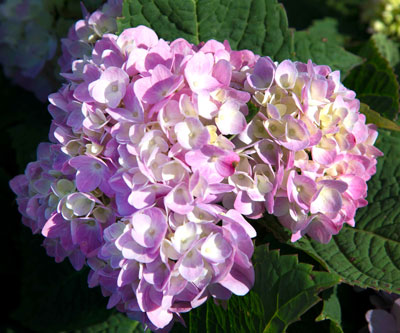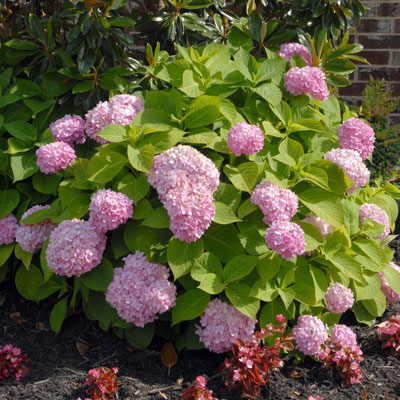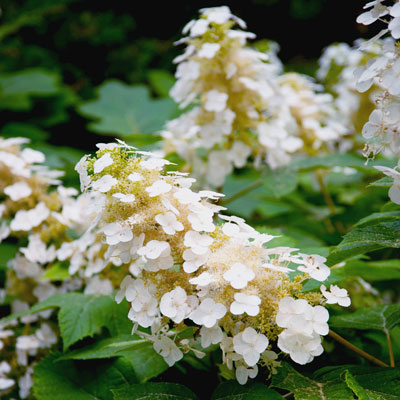Happy Hydrangeas
Everybody loves this big, showy bloomer. But for all who try hydrangeas, not everyone succeeds. Since they’re so commonly given for Mother’s Day, I thought you might like to see what it takes to grow them properly.

Lovely lavender-pink floral head of this variety is 5-6 inches across.
The requirements in short form…
• Morning sun (until 9:30 or 10 at the latest, less exposure is fine, too) and afternoon shade will suit them best. Think about where you might grow ferns, hostas, hellebores, summer phlox and columbines. That’s the same kind of environment you’ll want for hydrangeas.
• Highly organic planting soil. In East Texas, that means adding organic matter to what you already have at the time of planting. Near and west of I-35, however, it means replacing alkaline soils entirely with a mix of 50 percent sphagnum peat moss, 30 percent finely ground pine bark mulch and 20 percent sandy loam topsoil.
• The farther west and northwest you go in Texas, the more challenging hydrangeas will become. It’s almost impossible to grow them where winters are very cold or summers are very hot. Low humidity is not their friend, either.
• Water regularly. Hydrangeas have very large leaves, and they’re usually the first plants in the garden to dry out. Watch daily for signs of wilting, then soak them thoroughly when it starts to show up.
Note: Your hydrangeas may wilt temporarily when the sun is hitting their leaves even if their soil is still moist. They simply can’t pull water through their systems rapidly enough to meet the needs of their large leaves. If the soil is wet when they’re wilted, don’t add more water.
• Apply complete-and-balanced plant food every three or four weeks in spring and into early summer.

This pink-blooming hydrangea was lovely in a West McKinney landscape a few years ago. Iron deficiency, however, was becoming evident (yellowing leaves), and that, plus the past two really cold winters took its toll on this plant. It certainly would have preferred to have been in East Texas instead.
• Add an iron/sulfur soil amendment to correct iron deficiency. (Yellowed leaves with dark green veins, most prominent on newest growth first.) Keep iron products off masonry and painted surfaces.
• Prune only after they finish blooming, and then only as needed to reshape the plants. Exception would be in those extreme winters when the tops are frozen. You can prune out dead wood, but those stems probably will not bloom the following spring.

Oakleaf hydrangea is a tougher character. It’s one of my favorite flowering shrubs in the Sperry home landscape. Our plants are just starting to bud. I’ll probably feature it here in the next week or two.
There are many species and selections of hydrangeas. Where florist (“mophead”) hydrangeas have a reputation of being somewhat temperamental outside of East Texas (I’m not sure I’m going to try them again in my own DFW-area landscape), Oakleaf hydrangeas are far more durable.
